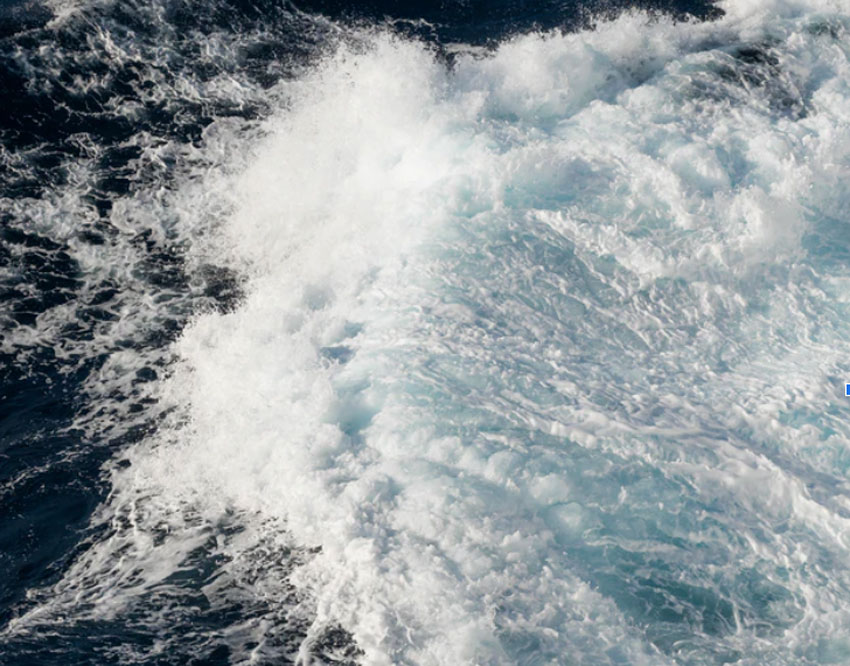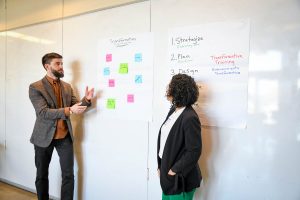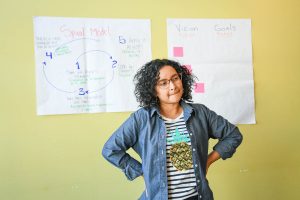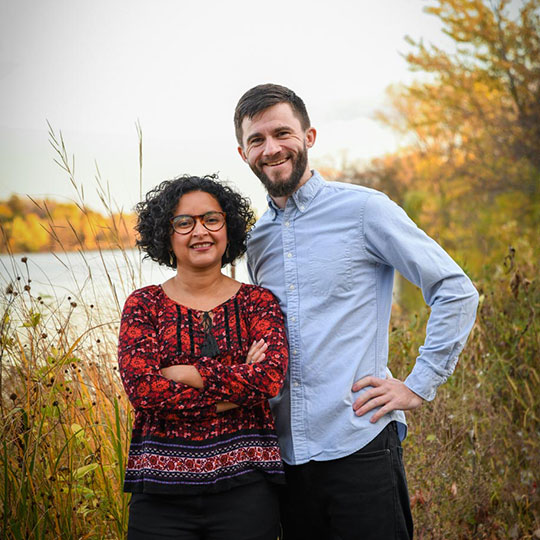You know that interactive is better, but when it comes down to it, sometimes it’s hard to think of something more creative than a slideshow. Who has the time?
But think about all the time you and your participants invest in a training, only to have it forgotten shortly after.
Your material is too important to get lost in the vast ocean of your participants’ minds!
See, your learners are already swimming in information—memes, work stress, family obligations, to-do lists.
If your training is going to stick, it needs more than content. It needs a methodology.
🎯 Show, Engage, Ask: A Simple Formula for Trainings That Stick
We call it the SEA method, and it’s now one of the most popular tools in both our client partnerships and our Transformative Trainer cohort.
You can get the worksheet here with 5,850 unique combinations for activities on any subject. This is how it works:
🟦 S — Show, Don’t Tell
For each action priority, consider a creative way to introduce information that makes it real and memorable.
There are many ways to turn content into a story. Here are some examples. What others can you name?
| – Video clip – Script – Painting – Physical game – Map | – Game show – Simulation – Comic – Personal story – Parable | – Visualization – 3D model – Song – Timeline – What else? |
💡 Why it works: Emotions boost memory. A strong visual, story, or metaphor helps learners retain what matters most…
🟨 E — Engage, Don’t Present
Design an activity that shifts learners from passive observers to active participants.
| – Pair dialogue – Large group dialogue – Small group dialogue – Speed dating – Fishbowl | – Write response on a notecard, have someone else read it. – Fill out a worksheet– Draw – Journal | – Role play– Write a song or poem – Create a collage – Perform a Skit – What else? |
💡 Why it works: Learners retain more when they’re moderately challenged. Mixing methods keeps people on their toes and boosts engagement.
🟩 A — Ask, Don’t Explain
Before you explain what you think the content means and why it’s important, ask learners to make their own meaning.
Use questions that move from observation to analysis to action:
| Observation – What did you see? – What did you hear? – What did you feel? – What stood out to you? – What did you like about it? | Analysis – Why did it happen? – How have you seen this in your work and life? – Who benefits? – Who loses? | Action – What might we learn from this example?– What would you do to change it? – How could we apply this in our own lives and work? |
💡 Why it works: According to adult learning expert Malcolm Knowles, adults learn best when they can connect content to their own lives and challenges.
💬 Final Tip: Less is More
The more content you try to pack in, the less time there is for learning to sink in.
Make sure to leave time for participation.
👉 Try it out next time you design a session.






7 Responses